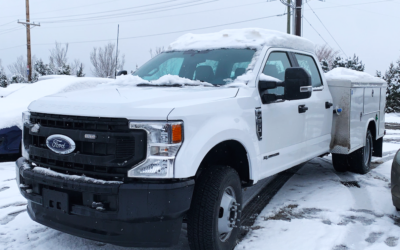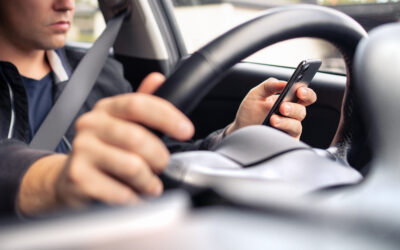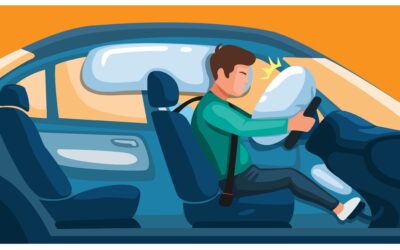Top Tips for Driving at Night
While driving, you make decisions depending on what you see. According to a research, 90% of all driving-related decisions depend on what drivers are able to see. When the sun goes down, our visions are certainly compromised, making us more susceptible to accidents than during the day. This explains why 40% of all fatal motor vehicle collisions occur at night.
Fleet drivers are even more likely to face road accidents because their extensive routes mean they drive many times more than an average US driver, both during the day and night. We’ve put together a few useful night driving tips to promote safe-driving practices:
Clean the Windows
Fleet drivers should make it a habit to clean all the windows of the vehicle, particularly the windshield. A dirty windshield coupled with a striking headlight coming from another vehicle leaves you absolutely sightless. A newspaper can be a good polishing material to remove all types of residues from the glass.
Fix the Headlights
It goes without saying that you can’t be driving at night without perfectly-functioning headlights. A far more common issue that’s often taken for granted is the incorrect projection of the headlights. Oftentimes, the headlights are uneven or pointed lower than necessary, which means that they won’t light the front roadway sufficiently. Even the brand new vehicles are prone to this issue, so make sure you aim your headlights in the right direction to maximize your road vision.
Look Away from Incoming Lights
Staring at bright incoming lights aimed at you can be blinding. Immediately look away from high beams because there’s no point in staring at it. You won’t be able to see anything in the first place, plus it might adversely affect your vision.
If a high beam aims at you from behind your vehicle, manipulate the rearview mirror to get the reflection away from your eyes and reflect it back to the driver. This should alert them about their high beam and signal them to lower the beam.
Alert Yourself When at Crosswalks and Intersections
According to the American Automobile Association (AAA), 75% of fatal accidents involving pedestrians occur during the night. Therefore, be extra vigilant when approaching crosswalks as it can be extremely difficult to spot pedestrians at night. The same applies to intersections, where the majority of the collisions take place. Look out for other vehicles as you get closer to intersections.
Never Tailgate at Night
While you should always maintain enough following distance in front, it becomes more important than ever during the night time. Maintaining at least one-car following distance should give you sufficient time to react if something unexpected happens right in front of your vehicle. Likewise, if the driver behind you seems to be getting too close at night, either let them overtake you or try and tell them to maintain a safe following distance.
Drive Under the Speed Limits
While violating the speed limit can be tragic at all times, consider driving slightly under the speed limit for maximum safety. This is particularly important when driving on poorly lit rural roads. Remember, the slower you drive, the more reaction time you have when faced with unforeseen events.
Clean Exterior Mirrors
Like a dirty windshield, blurry and unadjusted exterior mirrors can distract you by reflecting or distorting lights coming from various directions. Regular maintenance should keep them sparkling clean.
Make Appropriate Use of High Beams
Here’s another million-dollar tip: learn exactly when to use a high beam and when not. Most drivers would happily turn on the high beam when driving on poorly lit roads but fail to switch it off when a vehicle approaches them from the front. Just as an incoming high beam leaves you sightless at night, your high beam blinds an incoming driver, which can again result in a collision.
Hence, it’s indeed important to switch on your high beam on rural roads, but even more important to switch them off as soon as you see a vehicle approaching from the front.
Tone down the Dash Lights
Modern vehicles come with all that unnecessary lavishness and infotainment systems carrying bright lights in the interior. Like incoming lights from sources outside the vehicle, the lights originating from within the vehicle or the interiors can be equally damaging for your night vision. Turning down the dash lights to the lowest setting is a good idea when driving at night.
Look for Alternative Indicators to Find the Roadway
Road signs can be easily missed, and they may even remain out of sight during the night. When driving on unfamiliar routes at night, finding a roadway can be difficult. Look for other indicators to find roadways. For instance, keep an eye on which way the traffic ahead of you curves. Houses with lights, utility poles, and reflective street signs can help you visualize what lies ahead on the road.
Take Regular Breaks
If you’re a fleet driver who frequently travels long distances, it’s best for you to take regular breaks from driving so that you remain fresh and active throughout the journeys. Collisions often result from drivers falling asleep behind the wheel or getting exhausted. To avoid this, take a rest every two hours and have a cup of strong coffee during the breaks.
Take Care of Your Eyesight
Regular drivers should take sufficient care of their eyes, especially if they drive at night. Go for regular sight checkups to identify any eye-related problems at their earliest stages.
If you’re faced with an eye infection, don’t use a tinted lens for night driving. It’s best not to drive at all in such a case.
Closing Thoughts
Driving at night is not the same as daytime driving. While the main culprit is reduced visibility, the increased difficulty in judging the distance and speed can also prove fatal. Following the above-mentioned night driving tips should help minimize the chances of errors and reduce your risk of getting into an accident.
Source:
https://www.automotive-fleet.com/345738/10-night-driving-tips






